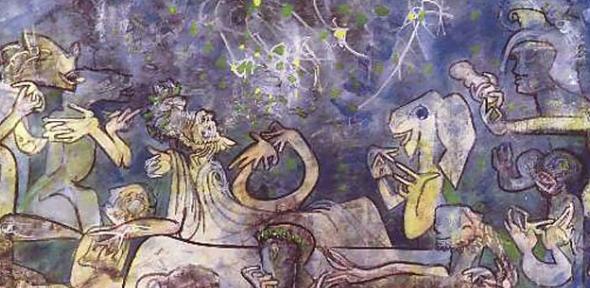This paper is available for the academic year 2023-24.
This paper gives you the opportunity to study Latin American literature, film, art and photography from the 1970s to the present day.
The paper is organized into a series of topics, authors, film directors and artists aiming to give you in-depth insight into the way culture has responded to profound social and cultural changes throughout the region.
Twelve comparative topics allow for study of issues such as the appeal to the testimonio genre by subaltern subjects as a means of challenging the elite's hegemony over writing systems since Conquest, the neo-baroque urban chronicles of queer artists and writers like Néstor Perlongher and Pedro Lemebel, the filmic culture of the megacity, the return to the land and rethinking of human-animal relations in postmodern eco-fiction, the appeal to the neo-noir detective fiction format as a means to making sense of criminal subcultures emergning in a context of neoliberal globalization, or questions of witnessing and memory in contemporary art. In the section on individual authors you can look in depth at the experimental narratives of Manuel Puig, with their reworking of mass forms, at the hallucinatory prose of Diamela Eltit and Roberto Bolaño as they revisit the ongoing effects of Pinochet's military dictatorship in Chile, the meta-testimonios of Laura Restrepo as they explore new commonalities between subaltern protest and 'escritura femenina', and at the multi-layered installations of internationally renowned Colombian artist Doris Salcedo, among others.
Although the main focus of the paper is on Spanish-language works, you are welcome to explore Brazilian culture comparatively in answers to the ‘topic’ questions.
There are no prerequisites for studying SP13, although it leads on well (without overlap) from Part IB Latin American Culture (SP5), and makes an interesting sister paper for those who also wish to write a dissertation on the earlier period in Part II Latin American Culture (SP12 - by dissertation only).
NB not all topics and authors will be lectured on every year. Those covered in the lectures in 2023-2024 are marked with an asterisk
Topics (Section A):
- La novela de la dictadura
- Latin American Urban Culture *
- Rewriting History *
- Post-dictatorship Argentine Cinema
- Escritura femenina
- Popular Culture *
- Testimonio *
- Queer Textualities *
- The Decline and Fall of the Lettered City *
- Post-modern Ecologies *
- Post-Boom Detective Fiction *
- Pathways of Testimony and Memory in Latin American Art
Writers, Film Directors and Artists (Section B):
- Manuel Puig *
- Cristina Peri Rossi
- Ricardo Piglia *
- Luisa Valenzuela
- Diamela Eltit *
- Roberto Bolaño *
- César Aira
- Laura Restrepo *
- Fernando Solanas
- Doris Salcedo *
- Fernando Vallejo *
- Roberto Matta (work post 1968)
- Jean Franco, Cruel Modernity (2014)
- Nelly Richard, Residuos y metáforas - ensayos de crítica cultural sobre el Chile de la transición (1998)
- Idelber Avelar, The Untimely Present: Post-dictatorial Latin American Fiction and the Task of Mourning (1999)
- Carlos Monsiváis, Aires de familia: cultura y sociedad en América Latina (2000)
- Francine Masiello, The Art of Transition: Latin American Culture and Neoliberal Crisis (2001).
- George Gugelberger (ed.) The Real Thing: Testimonial Discourse and Latin America (1996)
The paper is taught through a standard course of 20 lectures and 8 supervisions (6 for Optional Dissertation students).
Please see SP13's Moodle site. The password can be collected from the paper coordinator.
SP13 2024: The examination will consist of TWO parts:
1) Lent term Coursework Essay
Answer ONE question.
The questions released will cover works of those individual writers and artists that you have studied throughout the year (“Section B: Writers and Artists” of the old examination format).
You should make reference to TWO OR MORE works in your answer.
You should write no more than 1,800 words.
Essays will be due for submission at the start of the Easter term (the precise date and time to be announced in due course.)
2) Easter Exam (3hr timed online)
Answer TWO questions.
The questions released will cover the comparative topics that you have studied throughout the year (“Section A: Topics in Contemporary Latin American Culture” of the old examination format).
You should make reference to TWO OR MORE works in each answer.
For each answer write no more than 1,500 words.
Students may choose to answer ONE of these two essays with reference to TWO OR MORE works by a single author.
Candidates for this paper may not draw substantially on material from their dissertations or material which they have used or intend to use in another scheduled paper. Candidates may not draw substantially on the same material in more than one question on the same paper.
Dr Rory O'Bryen |




